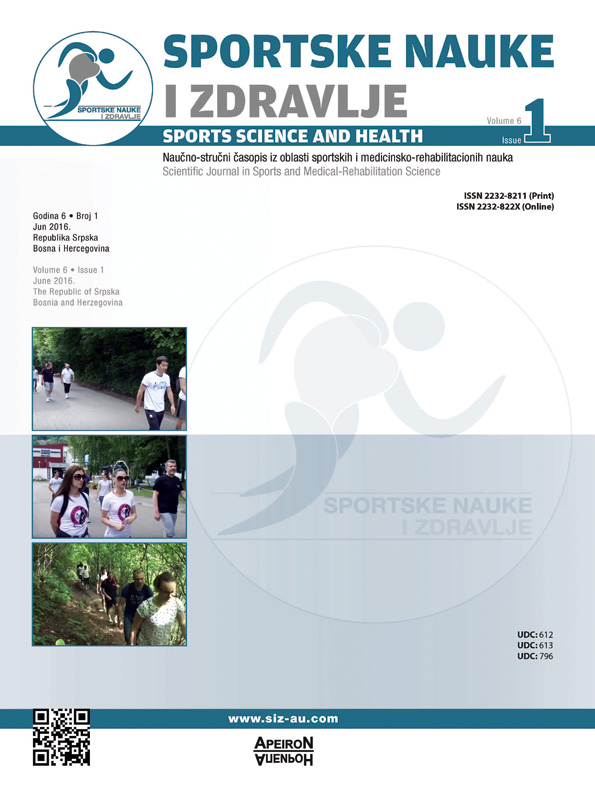Hijerarhijsko strukturiranje ekspertnog modela za poduku skijaškog osnovnog zavoja / Hierarchical Classification Metodical Model for Teaching Basic Ski Turn
DOI:
https://doi.org/10.7251/SSH16044KAbstract
With the goal to form the hierarchical classification of the most important methodical exercises for teaching basic ski turn in ski schools and test differences between ski experts based on their different level of skiing education, there was conducted a survey on the total sample of 307 ski experts from different countries. Through the filling out the online survey they tried to distinguish the importance of the formed model of the most important methodical exercises for teaching basic ski turn. Expert model of the most important methodical exercises captured 6 variables: uphill turn and jumping into snowplough, basic turn with hand sideways, basic turn with clapping, ski poles in front, ski poles on neck, uphill turn with active ski guiding. In order to investigate the statistic meaning of differences in ranking the methodical exercises for teaching basic ski turn, participants are divided into three groups based on the degree of skiing education they posses. In relation to above mentioned, sums of ranks (∑R) of the most important methodical exercises for teaching basic ski turn have been calculated. Using non-parametric analogue post-hoc analysis, i.e. Kruskal-Wallis test (H-test) and appropriate empiric level of significance (p), statistic significance of sums of ranks (∑R) of the most important methodical exercises for teaching basic ski turn have been tested. Significant difference between the value of ranking the most methodical exercises have been obtained (H=138,62; p<0,001). Those variables which were not different in statistically significant way according to sums of rank were classified in one significant group, while variables which showed statistically significant difference were classified separately. Multiple statistically significant difference based on different degree ski education between the ski experts were not obvious. The results of this study provide an accurate and scientifically based methodological settings for teaching basic ski turn. This opens the directions for future research in the form of construction of measuring instruments whose application in practice should allow better selection and choice of modalities methodical exercises for training alpine skiers of different ages and levels of ski prior knowledge.Downloads
Published
2016-06-29
Issue
Section
Чланци
